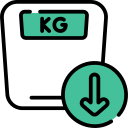Q. Can you explain the process of implanting a defibrillator and the key components involved?
Doctor Answer is medically reviewed by SecondMedic medical review team.
Absolutely! When it comes to implanting a defibrillator, it's a well-established procedure designed to safeguard your heart's rhythm. First things first, a small incision is made near your collarbone.
The star of the show? That's the pulse generator, a small device containing the battery and electronic circuits. This little powerhouse is connected to the heart through thin, insulated wires called leads.
Now, precision matters. The leads are delicately threaded through veins into the heart chambers, ensuring they're in the right spots to monitor and deliver that life-saving shock if needed.
Talking about shocks, let's discuss the electrodes on the leads. They're the key players in transmitting electrical pulses to the heart. The defibrillator constantly monitors your heart's rhythm, ready to jump into action if irregularities pop up.
The surgical team uses advanced imaging to guide them during this process, ensuring accuracy in lead placement. Once everything is in position, the incision is closed, leaving only a small scar.
Recovery? It's quicker than you might think. Most folks are up and about within a few days, though heavy lifting is usually a no-go for a short period.
Now, you might be wondering about follow-ups. Regular check-ups are essential to ensure the defibrillator is functioning optimally. Remote monitoring is often employed, allowing healthcare providers to keep tabs on your heart's performance without you having to trek to the clinic every time.
Remember, everyone's journey is a bit different, so your healthcare team will tailor the process to your unique needs. Rest assured, though – the goal is always to enhance your heart's well-being and keep it ticking smoothly.
Implanting a defibrillator is a testament to medical advancements, offering a lifeline to those needing a bit of extra support in the rhythm department. So, if you're gearing up for this procedure, know that you're in good hands, and your heart is about to get a high-tech guardian!












